The Cuban Missile Crisis – how close to nuclear war did we get?
53 years ago today, a nuclear war between the US and USSR was narrowly averted after Khrushchev 'blinked'

On 28 October 1962 the Cuban Missile Crisis came to an end. Russian premier Nikita Khrushchev announced on Radio Moscow that the USSR would be removing the nuclear missiles it had stationed on the Caribbean island of Cuba, roughly 90 miles from Florida.
In the words of the then US Secretary of State Dean Rusk, "We were eyeball-to-eyeball and the other fellow just blinked."
The USA already had a fractious relationship with the island state of Cuba before the crisis. In 1961, a CIA-sponsored invasion attempt to overthrow the communist Cuban leader Fidel Castro had failed miserably in the Bay of Pigs.
Subscribe to The Week
Escape your echo chamber. Get the facts behind the news, plus analysis from multiple perspectives.

Sign up for The Week's Free Newsletters
From our morning news briefing to a weekly Good News Newsletter, get the best of The Week delivered directly to your inbox.
From our morning news briefing to a weekly Good News Newsletter, get the best of The Week delivered directly to your inbox.
Castro wanted to be defended against a full-scale US invasion but Khrushchev's main reason for placing the missiles with his communist comrade was that there were American missiles stationed in Turkey, close to the USSR.
It was a game of political brinkmanship, but to this day remains the closest we have ever got to nuclear annihilation.
14 October 1962
Photos taken by US spy plane missions show evidence of ballistic nuclear missiles, transporters and bunkers on Cuban soil.
16 October 1962
ExComm (the Executive Committee of the National Security Council) meets at the Whitehouse to debate how to respond to the threat.
Eventually the decision is made to make a public declaration of a naval blockade of the island in order to prevent further missiles from being delivered.
22 October 1962
President John F Kennedy speaks to the American people, announcing the blockade and challenging Khrushchev to remove the weapons.
The biggest US troop invasion force since D-Day, gathers in Florida in preparation.

24 October 1962
US Strategic Air Command is ordered to Defcon (Defence Condition) 2, the highest level it has ever reached.
Over Europe, American bombers are in the air 24 hours a day. Each bomber carries nuclear weapons, each one has a target and each one is ready to launch at a moment's notice.
25 October 1962
14 Soviet ships turn back from the blockade.
26 October 1962
Khrushchev offers Kennedy a deal by letter – they will remove missiles in return for an end to the blockade, and a promise not to invade the island without direct provocation.
27October 1962
Kennedy replies to Khrushchev's letter accepting the offer.
By secret agreement the Turkish missiles will also be removed.
28 October 1962
Khrushchev goes on air to announce the removal of Russian missiles from Cuba.
Kennedy thanks Khrushchev by telegram, before publically acknowledging the end of the crisis.
Modern day historians note that the standoff nearly turned into a global calamity. With bombers in the air and nearly 3000 American nuclear weapons alone in a state of readiness, the Cuban Missile Crisis could have led to the end of the world in mere minutes.
Create an account with the same email registered to your subscription to unlock access.
Sign up for Today's Best Articles in your inbox
A free daily email with the biggest news stories of the day – and the best features from TheWeek.com
-
 'Test of faith for Trump Media's investors'
'Test of faith for Trump Media's investors'Today's Newspapers A roundup of the headlines from the US front pages
By The Week Staff Published
-
 Fallout: one of the 'most faithful – and best – video game adaptations'
Fallout: one of the 'most faithful – and best – video game adaptations'The Week Recommends This 'genre-bending' new Amazon series is set in a post-apocalyptic wilderness where survivors shelter below ground
By Adrienne Wyper, The Week UK Published
-
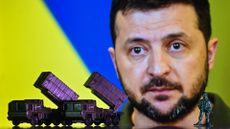 Will Iran attack hinder support for Ukraine?
Will Iran attack hinder support for Ukraine?Today's Big Question Pro-Kyiv allies cry 'hypocrisy' and 'double standards' even as the US readies new support package
By Elliott Goat, The Week UK Published
-
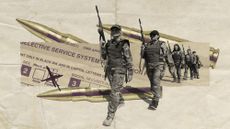 The issue of women and conscription
The issue of women and conscriptionUnder the radar Ukraine military adviser hints at widening draft to women, as other countries weigh defence options amid global insecurity
By Harriet Marsden, The Week UK Published
-
 Ukraine's unconventional approach to reconstruction
Ukraine's unconventional approach to reconstructionUnder the radar Digitally savvy nation uses popular app to file compensation claims, access funds and rebuild destroyed homes
By Harriet Marsden, The Week UK Published
-
 Will Ukraine's leadership reset work?
Will Ukraine's leadership reset work?Today's Big Question Zelenskyy hints at ousting of popular military chief, but risks backlash amid dwindling munitions, delayed funding and Russian bombardment
By Harriet Marsden, The Week UK Published
-
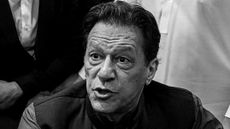 Imran Khan sentenced to 10 years: how powerful is Pakistan's military?
Imran Khan sentenced to 10 years: how powerful is Pakistan's military?Today's Big Question The country's armed forces ignore country's economic woes, control its institutions and, critics say, engineer election results
By Harriet Marsden, The Week UK Published
-
 What is Iran's endgame?
What is Iran's endgame?Today's Big Question Tehran seeks to supplant US and Saudi Arabia as dominant power in Middle East while forcing Israel to end Gaza war
By Harriet Marsden, The Week UK Published
-
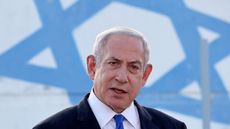 Israel proposes two-month pause in Gaza war in exchange for all Hamas hostages
Israel proposes two-month pause in Gaza war in exchange for all Hamas hostagesSpeed Read Deal doesn't include an agreement to end war, but might be 'the only path that could lead to a ceasefire', said US officials
By Harriet Marsden, The Week UK Published
-
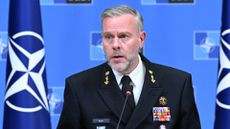 Nato official warns of all-out war with Russia in next 20 years
Nato official warns of all-out war with Russia in next 20 yearsSpeed Read Civilians must prepare for life-changing conflict and mass mobilisation, says military chief
By Harriet Marsden, The Week UK Published
-
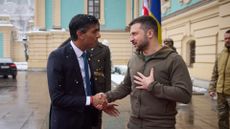 Rishi Sunak visits Kyiv to announce £2.5 billion in military support for Ukraine
Rishi Sunak visits Kyiv to announce £2.5 billion in military support for UkraineSpeed Read Surprise trip comes amid increased Russian bombardment and escalation of Middle East crisis
By Harriet Marsden, The Week UK Published